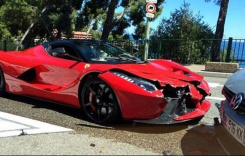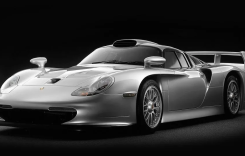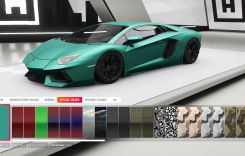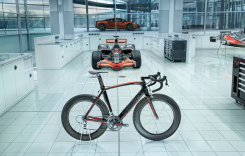Honda‘s CRF250X makes its comeback for 2012 with an updated look, but it’s the same bike that’s been providing Red Riders with loyal performance for years. The ergonomic package and chassis are the first things our riders commented on. It’s not uncommon to hear that a bike has a “Honda feel” and it’s usually a positive thing. The CRF is comfortable straight away, which allows our testers to feel right at home behind the Renthal handlebars. Honda was the first of the big OEMs to adopt and develop the aluminum chassis. The multiple generations have morphed into a signature design for the brand and are part of the reason some riders are immediately comfortable aboard a red machine. It’s no coincidence that our test riders who’ve ridden or owned Hondas in the past almost exclusively preferred the feel of the CRF.
“The CRF felt more roomy and comfortable for all-day rides that required a decent amount of time in the saddle,” says Dawes.

The layout comes from a fourth-generation twin-spar aluminum chassis. The side spars have deep indents that help keep the bike thin between the rider’s knees. The rider triangle is comfortable for a wide range of pilots with the handlebars and footpegs far enough apart for comfortable riding in the standing position. The seat is also relatively flat with a comfortable foam density.
Honda’s aluminum chassis and ergonomics are
comfortable and familiar feeling to many riders.
“The 250X felt like a natural transition for my type of riding,” confirms our female tester, Sequoyah Munroe. “Both bikes felt about the same to me for comfort. The footpegs, handlebars and levers are all comfortably within reach, but I like the Honda more because it feels more like a motocross bike.”
Red engineers have kept the weight at 250 pounds with a full 1.9 gallons of fuel, nine pounds less than the Yamaha. The lighter weight and a 46.8% weight bias on the front end give it a livelier feel on the trail and it handles much quicker than the Yamaha. EnduroCross professional Kyle Redmond prefers the Honda’s cornering ability and its weight advantage for climbing over obstacles. All of our other testers were able to feel the weight difference as well and it feels even more significant than expected for only nine pounds. Some of the handling benefits come directly from the engine.
All told, Honda says the engine attributes for 59.3 pounds. Honda’s Unicam design uses a single camshaft which drives two 31mm titanium intake valves and two 26mm steel exhaust valves. The single overhead cam (SOHC) helps make the engine shorter and more compact overall. It also saves weight compared to a DOHC, such as the WR’s. The camshaft also sits lower in the cylinder head to lower the center of gravity. The Single uses a 78mm x 52.2mm bore and stroke with a 12.9:1 compression ratio (12.5:1 on the Yamaha). It’s liquid-cooled with an overflow catch tank located underneath the rear fender on the left side. One thing the CRF-X doesn’t get is Hondas Programmed Fuel Injection (PGM-FI). Instead, it makes use of the trusty 37mm Keihin flat-side carburetor.
Fueling isn’t the best with a large flat spot off the bottom. As with many carbureted four-strokes, the CRF suffers from a bog on the bottom end when the throttle is opened quickly, which isn’t helped any by the extra smog equipment. A block-off kit for the emission hardware and an aftermarket pipe are typically some of the first items installed. In stock trim, power output is mild, though it has plenty to get up all but the steepest hills. Riding in deep sand or on wide-open terrain are not the right type of terrain for this bike, but it excels at technical riding. At trail speeds, the Honda generates plenty of power and we found it best when kept in the midrange to upper-rpm.
Lighter weight and a feathery clutch make getting over obstacles extra easy, but where’s the skidplate?
The CRF uses a wide-ratio five-speed transmission. Lofting the front end is simple in the very low first gear, and it’s possible in second and third as well. The 14/53 final gearing is a bit tall which makes it harder as the speeds and gear selection climbs. However, clutch modulation is mindlessly easy, which minimizes arm pump and rider fatigue even on tight trails. Even though it could use a little more bottom end punch or a couple extra teeth on the rear sprocket, the CRF is still great at conquering intimidating obstacles because of its smooth power delivery and trustworthy drivetrain.
“The clutch is light and easy to pull and I never missed a gear shift during the time I was on it – typical Honda quality.”
The 250X uses a 47mm inverted twin-chamber Showa cartridge fork with 16 positions of adjustment on both rebound and compression. This is combined with a Pro-Link Showa shock out back. The shock is preload adjustable with 17-position rebound, 13-position low-speed compression and 3.5 turns of high-speed compression. Overall, our testers were more satisfied with the Honda’s sticks than they were with the Yamaha’s. For the men, both bikes are too soft, especially when carrying speed or riding aggressively, but our female rider found the Honda a bit rigid at times.
“The Honda felt stiff to me going through whoops,” says 145-pound Munroe. “But it helps make the front end much more nimble and that makes the CRF corner much easier.”
Redmond and I also preferred the Honda’s suspension, noting that it holds itself up in the stroke and making the most of its 13.6 inches of ground clearance. For Redmond, who makes his living going fast across ridiculously hard terrain, this helps give the Honda a racier feel, though he still considers the X a trail bike through and through. Our heavier tester saw things differently with the suspension.
“The Honda is softer than the Yamaha, which makes it nice when things get chunky and rocky,” counters Dawes, “but it wallows a bit in the faster stuff. It also lands harder off drops and jumps.”
Braking comes from a twin-piston Nissin caliper up front and single-piston out back with 240mm rotors on both ends. Power is adequate for the speeds and weight of the bike, though none of our testers made particular note of the braking prowess on either bike.
What we did notice, and every person complained about, is the ridiculous odometer. The mechanical system is blocky and offers only one function, gaining universal dislike from our riders. Considering the Honda’s build quality and clean package, it’s even more of an eyesore.
“I think I had the same odo on my ‘84 XR250 when I was 14,” jokes Dawes. “If it works don’t mess with it? Not in this case, Honda needs to move into the digital age here.”
Despite this funky flaw, we generally loved the red bike. We simultaneously like that it can get a green sticker in California yet is easily modified to wake up and generate a bit more performance while shedding the extra weight. Even
The CRF was praised by all for its comfortable and precise handling. This bike needs a little more power and cleaner jetting, which can easily be found in the aftermarket.
without any mods, the CRF feels pretty light, much lighter than the WR. The electric start is infallible and lights the engine immediately, and the X doesn’t hesitate too much on cold mornings with its carburetor. It has a wide-stance kickstand, comfortable ergonomics, manageable power and quality components that have survived a healthy dose of crashes throughout our testing. Plus, this is one of the bikes that have helped Honda earn its reputation for dependability.
Four out of six test riders preferred the Honda over the Yamaha. Our novice test rider has spent the past several years riding the woods on modified two-stroke and four-stroke 250cc motocross bikes, and he’s already making plans to get one of these instead. Our more experienced riders would love to have one in their garage as well for non-racing weekends, or any time a friend wants to come over and go riding. Even our female is a convert.
“Historically, I’ve shied away from the electric start enduro bikes, mostly because of their stereotyped weight,” admits Munroe, “but maneuvering the Honda is no different than having to muscle my YZ250F around. In fact, at the end of the day it’s easier because I don’t have to kick it. I’m comfortable and confident on the Honda and that’s why I would be happy with it parked in my garage. I’d even trade my YZ-F for it.”









